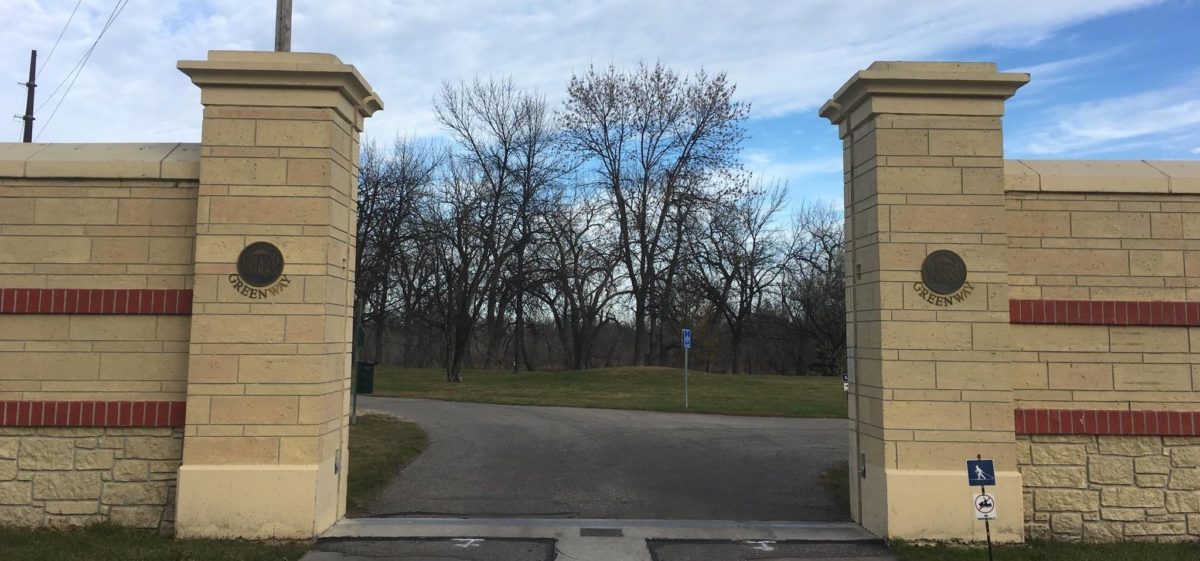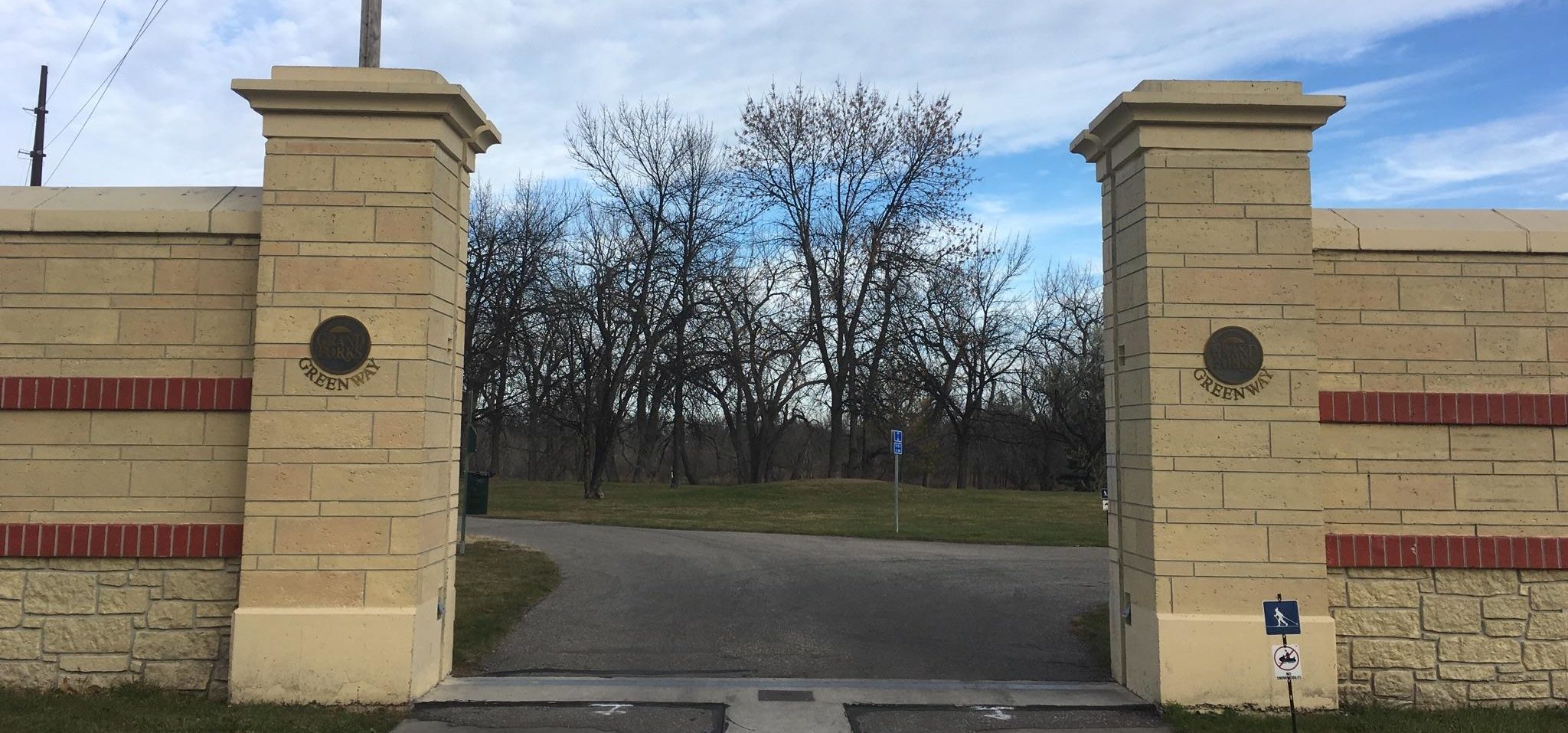Bias at the top: I’ve been a vocal supporter of the opening in floodwall near the Anne Street Bridge. And if you haven’t been following the story, you can catch up on the coverage here.
Last Monday, City Council voted 8-6 against a motion to amend Minot’s Phase 1 flood protection plans to add a pedestrian opening at the foot of the historic Anne Street Bridge.
The discussion over the floodwall opening centered on many issues, but the players in the discussion were basically Alderman Straight and Alderman Podrygula as well as neighborhood residents in support, and Public Works Director Dan Jonasson against. Aldermen who voted against the opening were no doubt swayed by the arguments of Mr. Jonasson, though they certainly brought their own concerns to bear as well.
But on further investigation into some of the statements made by Mr. Jonasson, there is a question of whether the whole story was being told. And in some cases, the ‘facts’ of the matter are in dispute.
Is it a question of integrity?
The primary argument against adding an opening with direct access to the Anne Street Bridge — as requested by residents — was Mr. Jonasson’s position that an opening represented a sacrifice to the overall safety and integrity of the floodwall. You can watch Mr. Jonasson’s comments which were repeated multiple times in discussions at committee and at full council here, but the quote that captures his doubt is this:
“Every opening you add decreases the integrity of that floodwall. You don’t have a solid flood wall there, you have an opening that’s not as — I guess – not as safe as a solid flood wall.”
— Public Works Director Dan Jonasson, December 5, 2016
That’s Mr. Jonasson’s opinion, and, if accurate, it’s extremely troubling. If openings are less safe — and we have 22 of them through town — it certainly invites the question about the safety of the overall plan. That’s a bigger question than the scope of this article, but it is something I’m looking into.
But is Mr. Jonasson’s opinion accurate? If we rewind back to the public input meeting held in November of 2015 at McKinley School focused on Phase 1, the argument against a second opening made by Houston Engineering’s Phase 1 Project Manager Jerry Bents wasn’t about the ‘integrity’ of the flood wall and the safety of life and property — at least in the most literal sense. It was about maintenance. You can both read and listen to his response to a question about adding a floodwall opening at the foot of the Anne Street Bridge below:
The summarized question: Is it possible to add an opening near the Anne Street Bridge so people don’t have to walk down to Broadway and back before gaining access?
“It’s certainly possible. Right now, what we’ve tried to do with the openings is minimize them. And really the theory behind that is that when you think about the entire plan– all the phases through Minot — with the Mouse River Plan that was developed after the 2011 flood, I think there was 30 closure structures. All of those closure structures have to be operated on a regular basis — even when it’s not flooding — so that you can show that you have the ability to put them in place, and still know where all the right pieces are at, in order to maintain FEMA certification. So, we’re trying wherever we can within the community to minimize the number of those openings. And that’s why for this project reach, we went down to the concept of one opening here [Broadway], access on the wet side. But to answer your question, you could. There’s no reason — other than just another opening would be the reason not to do it.”
— Jerry Bents, Houston Engineering, Phase 1 Project Manager, November 9, 2015
Note: This video was cut so the question portion at the beginning could be amplified so it was more easily understood. You can listen to the original here.
Now, to my understanding, those are two contradictory statements. Mr. Jonasson’s reason against the opening — it compromises the integrity of the floodwall; it is a threat to life and property. The project engineer’s reason was seemingly more benign — maintenance and the desire to minimize openings.
Wanting to reconcile this contradiction, I reached out to Phase 1 Public Information Officer Mark Lyman with questions about the proposed opening and some general information about floodwalls. These were the questions:
Questions Directed to Phase 1 Project Manager Jerry Bents via Public Information Officer Mark Lyman
My assumption — please correct me if I’m wrong — the development of engineering specs for a flood wall requires the discovery of load factors (probably based on height and water pressure), needed impact resistance, and likely many other considerations. Would you please go into the factors — in layman’s terms as much as possible — that go into engineering a flood wall?
The pedestrian opening at the Broadway Park — in terms of engineering requirements listed above — was that engineered to different load factors and standards than the concrete wall sections in the area?
In layman’s terms, does a removable opening result in a weaker wall and increased vulnerability to life and property?
At the November 2015 public input meeting regarding Phase 1 of Minot’s flood protection plan, Mr. Bentz referenced maintenance and the desire to reduce the number of overall openings as the sole reason for a single pedestrian opening. At the December 2016 Minot City Council meeting, Public Works Director Jonasson referenced concerns over the integrity of the flood wall and protection of life and safety as one of the reasons for a single opening. His quote from that meeting, “Every opening you add decreases the integrity of that floodwall. You don’t have a solid flood wall there, you have an opening that’s not as — I guess – not as safe as a solid flood wall.” Mr. Jonasson’s statement contradicts Mr. Bentz’s statement from November 2015. Has new information or some other factor been discovered that might explain the contradiction?
On Friday afternoon, I met with Mr. Lyman to talk about the issue. I was neither taking notes nor recording the conversation, so I’m not able to provide a quote, and he was unwilling to provide a written statement. But in our conversation, Mr. Lyman encouraged me to consider the seemingly contradictory statements as substantially the same. His larger argument was this: any opening in a solid structure is an opening that requires operation and maintenance and is, therefore, less safe.
On the question of the engineering standards required of removable openings versus solid walls, Mr. Lyman would not comment and directed me to the Souris River Joint Board. I’ll be reaching out to them this week.
Is it a question of maintenance and resources?
After Mr. Jonasson’s concern over life and property, another argument he repeatedly made against the opening was that it would require additional resources including personnel and equipment to operate the closure structure. At Public Works Committee on November 30th, he described operational requirements and burden that each opening represents. Watch it below.
And while operation and maintenance are realms in which Mr. Jonasson is seemingly qualified to speak, a few of his statements to the committee gave cause to seek outside confirmation. Of most note to me was the statement that each stoplog — the aluminum bars that close up an opening — weigh 300 lbs and require equipment to install.
To confirm the weight of stoplogs and other operational details about an 8’ opening and the closure structure that would seal it up, I reached out to Dave Kluck of NW Power Equipment. Mr. Kluck and his company are the regional representatives for IBS Floodwalls, the German-manufactured system that was purchased to complete our removable closure structure on 16th Street near the Water Treatment Plant.
On the weight of stoplogs and the operational requirements of an 8-foot opening, this was Mr. Kluck’s statement:
“The logs are approximately 3.5 lbs / foot. So an 8′ log would weigh 28 lbs. I believe he [Mr. Jonasson] was referring to the posts. A 10 foot post weighs about 350 Lbs. and can be handled by two people. The longer 17′ post is closer to 900 lbs. These are installed with a skid steer, forklift or something similar.”
An 8′ opening would not require a vertical support up to at least 18 feet high (possibly higher but I would need to confirm with engineering). Once the logs are on site this size opening should not take more than 20 minutes to install. The end channels are already in the wall so all that needs to be done is to slide the logs in the channels and install the pressing tool on top.”
— Dave Kluck, NW Power Equipment, Representative for IBS Floodwalls
So it would seem once again that we have a contradiction of fact.
On the larger issue of the safety of removable floodwall structures, Many of Mr. Jonasson’s comments reflect poorly on the IBS Floodwall product and the manufacturer Mr. Kluck represents. I offered him the opportunity to comment on the general safety standards of removable structures and he accepted. His statement follows:
“I can understand the argument against aluminum versus concrete. When you break it right down though water is a powerful force and whether you have a 2 foot thick concrete wall or a 4 inch thick aluminum wall, if the concrete foundation underground is not adequate either one will topple over immediately. There are many communities that you will find in the attachments that have trusted these walls to protect life and safety. Some of these communities value the natural landscape, mobility and property aesthetics so much that they have used removable walls the entire length of the project to protect these cities. Realistically, the large majority of the time this flood defense will not be used. Aluminum, if stored correctly, will last indefinitely. The components are also standardized and modular so they can be replaced easily if needed. Concrete and rebar, even with routine maintenance, has a definable life span.
I realize, given my profession, that my opinion will be seen as biased. I’ve been around these projects for 16 years though and I have seen the benefit of using these systems first hand. I currently live in a city protected by three IBS walls. I literally stand behind them.”
Dave Kluck, NW Power Equipment, Representative for IBS Floodwalls
Mr. Kluck also provided the following video which provides an overview of the removable floodwall product they provide. I will be seeking the comments of project engineers and the U.S.A.C.E. on the safety of removable structures this week as the issue of the opening at the Anne Street Bridge seems far from over.




